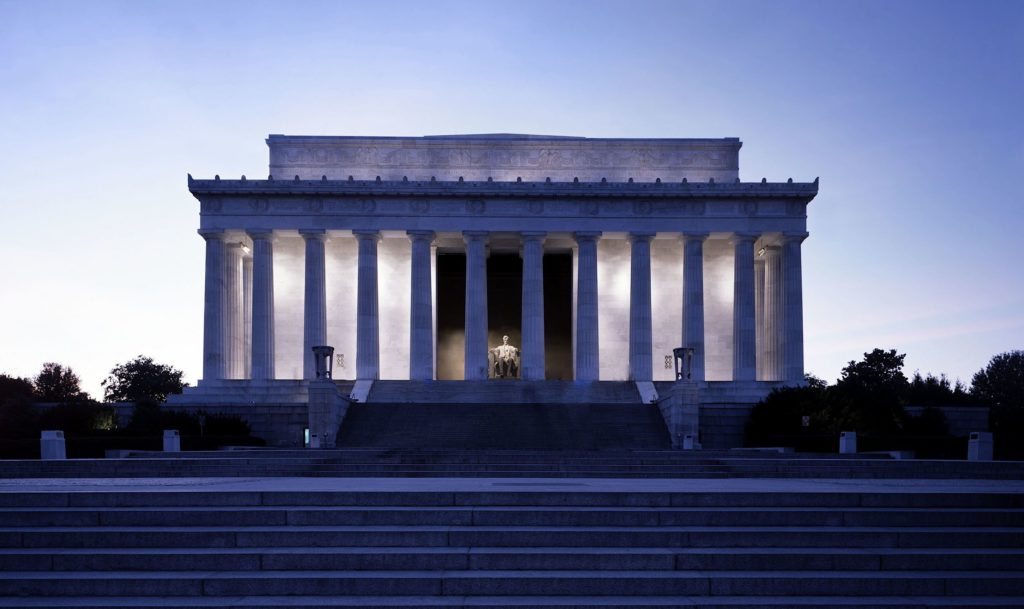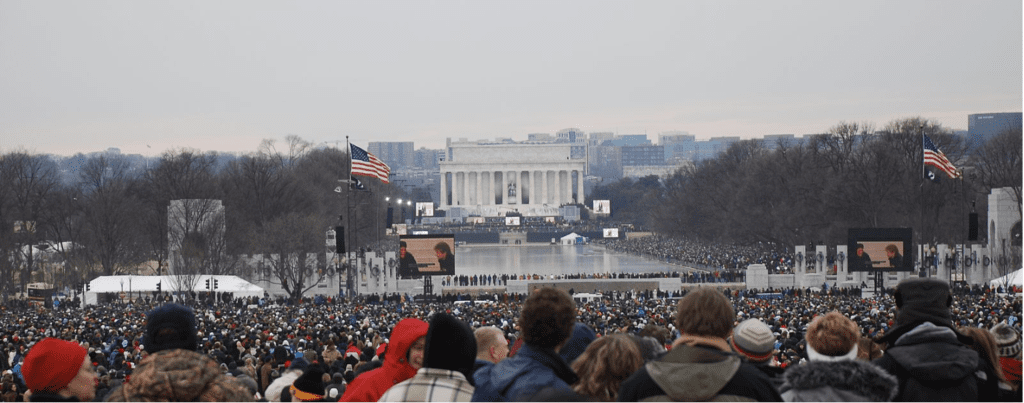Lincoln Memorial Turns 100 on Memorial Day
By • May 26, 2022 0 1917

We live in Mr. Lincoln’s city. So much of his life’s moments vibrate through the collective frequencies of Washington, D.C., where other presidents come to mind.
This nation’s savior, the great emancipator, our first martyred president, a doting father and husband, Abraham Lincoln watches over us still.
There are so many images of and so many books written about Lincoln that we sense we might lose our focus on this man upon whose death an observer proclaimed: “Now, he belongs to the ages.”
Indeed, he does. Happily, we live in Mr. Lincoln’s city. We know where to look, where to go — as so many before us — and we go to the Lincoln Memorial, which turns 100 on May 30, where he indeed watches over us in Jupiterian solemnity.
Inspired by the Parthenon, the memorial centers on a statue of the seated 16th president of the United States. Inscriptions on the interior walls feature his Gettysburg Address and Second Inaugural Address. Nearby murals depict the reunification of the United States after the Civil War as well as the emancipation of more than 4,000,000 enslaved persons.
The sculpture is by Daniel Chester French, whose works include “Thomas Hopkins Gallaudet and Alice Cogswell” at Gallaudet University and “Alma Mater” at Columbia University. The building is by Henry Bacon, who worked with French on other commissions, including the Dupont Circle Fountain.
The National Mall would be impossible without this symbolically powerful structure, part of the National Park Service, which tells us: “The dedication of the Lincoln Memorial took place on Decoration Day (now known as Memorial Day) weekend. An estimated crowd of 50,000 attended the ceremony, while as many as two million listened across the country via the new medium of radio. Speakers included President Warren G. Harding, former president and Chief Justice of the United States William Howard Taft (who also served as chairman of the Lincoln Memorial Commission, which had overseen the design and construction of the memorial), and Dr. Robert Russa Moton, principal of the Tuskegee Institute. The latter, despite his honored place in the program and his remarks promoting equality among the races, addressed a segregated audience that day, a symbol not only how far the nation had come, but how much work remained.”
In his dedication speech in 1922, Harding concluded: “This memorial, matchless tribute that it is, is less for Abraham Lincoln than for those of us today, and for those who follow after. His surpassing compensation would have been in living, to have his ten thousand sorrows dissipated in the rejoicings … This great American heart would be aglow to note how resolutely we are going on, always on, holding to constitutional methods, amending to meet the requirements of a progressive civilization, clinging to majority rule, properly restrained, which is ‘the only true sovereign of a free people,’ and working to the fulfillment of the destiny of the world’s greatest republic!
“Fifty-seven years ago, this people gave from their ranks, sprung from their own fiber, this plain man, holding their common ideals. They gave him first to service of the nation in the hour of peril, then to their pantheon of fame. With them and by them he is enshrined and exalted forever.
“Today American gratitude, love and appreciation, give to Abraham Lincoln this lone white temple, a pantheon for him alone.”
Still, it is those who have stood at this perch of power that gives the Lincoln Memorial its enduring, ever-present prominence in the American mind.
Think of Marian Anderson in 1939, Rev. Martin Luther King, Jr., in 1963, protestors against the Vietnam War, and so many other demonstrations for racial, economic and social justice — and for peace. Imagine what Lincoln himself might have thought about the inauguration of the nation’s first Black president Barack Obama, with first lady Michelle Obama next to him, on that cold day, January 20, 2009. See the everyday visitors, from near and far, climbing the steps to see this great American. Look out for cyclists passing by, a few dancers in the Reflecting Pool, parents with strollers, the National Park Police on horseback, photographers waiting for the perfect shot. Show up early to beat the crowds watching the July 4th fireworks.

The Lincoln Monument during the January 18, 2009, “We Are One Concert” celebrating the inauguration of the nation’s first Black president Barack Obama. Photo by Jarek Tuszyński.
And we read and know: “In this temple, as in the hearts of the people for whom he saved the Union, the memory of Abraham Lincoln is enshrined forever.”
After all, we are in Mr. Lincoln’s city, and he is still watching over us.

